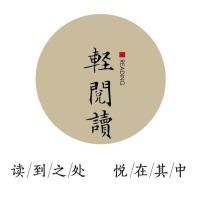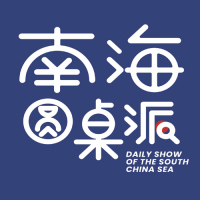The Sinister Intent Behind the Philippines’ Escalated Provocations Against China Following the August 11 Incident
On August 11, the Philippines once again used the pretext of supplying “fishing vessels” to intrude into waters near China’s Huangyan Dao. Several Philippine coast guard and government vessels obstructed China’s law enforcement activities, leading to an incident.
Afterwards, the Philippines, disregarding China’s tolerance and restraint, spread disinformation on a large scale in an attempt to manipulate public opinion. Meanwhile, in collusion with the Philippines, the U.S. destroyer USS Higgins illegally entered the territorial waters of Huangyan Dao on August 13. The Philippines’ recent string of provocations is not only a repetition of old tactics, but is also driven by multiple domestic and international factors.

(On August 11, 2025, the Philippine Coast Guard 4406 intrudes into the waters near China's Huangyan Dao and dangerously approached Chinese vessels. /China Coast Guard)
First, under the guise of “resupply,” it is in fact carrying out provocations. The Philippines’ illegal activities on South China Sea islands and reefs have entered a new phase. The first phase was at Ren’ai Jiao, “using grounding as a pretext for occupation,” when the BRP Sierra Madre was deliberately grounded and then “resupplied” to cement it as a permanent military outpost. The Philippines is now attempting to replicate this “resupply strategy” at Huangyan Dao, where so-called resupply has become routine. At present, its occupation strategy has moved into a second phase, using resupply as a cover for provocation.
The August 11 incident is essentially a replay of the August 19 incident last year. However, since the start of this year, Philippine patrol ships have repeatedly crossed the bows of Chinese coast guard vessels at speeds of 30 knots, creating dangerous wave conditions, clear evidence that its provocations have significantly escalated.
Second, the shift in U.S.-Philippines relations under the backdrop of the “tariff war” has been a major factor driving Manila’s heightened provocations. Since the second half of this year, the Philippines’ increasingly provocative actions have been directly linked to Washington’s “reciprocal tariff” plan.
In early April, the United States announced its initial version of the plan, with a clear tariff gradient across Southeast Asia, ranked from highest to lowest as follows: First tier: Cambodia (49%), Laos (48%), Vietnam (46%), Myanmar (44%); Second tier: Thailand (37%), Indonesia (32%); Third tier: Malaysia (24%), Brunei (24%), the Philippines (17%), Singapore (10%). While the Philippines’ placement in the third tier might appear to signal Washington’s leniency, developments quickly proved that Manila was merely a pawn in the U.S. “Indo-Pacific” strategy, neither an equal partner, nor, by any stretch, a staunch ally.
In the “tariff war,” the Philippines’ status as a U.S. ally only brought it American blackmail. On July 9, Trump unilaterally announced that, starting August 1, the U.S. would raise tariffs on the Philippines to 20%. Yet the Marcos Jr. administration was powerless to respond, resorting only to ingratiating itself with Washington.

(US President Donald Trump meets with Filipino President Ferdinand Marcos Jr. in the Oval Office of the White House in Washington, DC, on July 22, 2025. /CFP)
Recently, two “proactive” moves in Philippine diplomacy have epitomized this sycophancy. The first came in late July, when Marcos Jr. made a goodwill visit to the U.S. on his own initiative. This made him the first ASEAN head of government to visit the U.S. during Trump’s second term, but in the tariff negotiations, it only resulted in a token concession, reducing the additional tariff on the Philippines to 19%, far from the 10% target he had vowed before the trip.
The price, however, was for the Philippines to grant zero tariffs on all imports from the U.S., leaving no bargaining chips for future talks. During the visit, Trump’s remark that Marcos Jr. was “a very good and tough negotiator” became an ironic backhanded compliment. After Washington adjusted its tariff hikes on Southeast Asian countries, Myanmar and Laos formed the first tier (both at 40%), Brunei the second tier (25%), Vietnam (20%), and Thailand, Cambodia, Indonesia, Malaysia, and the Philippines (all at 19%), with Singapore in the third tier (10%). Moving from 17% to 20% and now to 19%, Marcos Jr.’s diplomacy suffered a major blow, forcing him to divert attention elsewhere.
Secondly, the Philippines is attempting to bind its allies through manufactured crises in exchange for U.S. economic concessions. While escalating provocations at Huangyan Dao, Manila has willingly played the role of Washington’s “Indo-Pacific pawn.” Shortly after concluding his U.S. visit, President Marcos Jr. led a delegation to India on August 4, the first visit to India by a Philippine president in 18 years. This trip upgraded bilateral ties to a strategic partnership and saw the signing of 13 agreements, with military and maritime cooperation as key areas. The joint declaration mentioned collaboration in the “co-development and production of defense equipment.” During the visit, in an interview with Indian media, Marcos Jr. stated that if conflict broke out across the Taiwan Strait, the Philippines “could not stand idly by.” His intent to stir trouble and fuel tensions in the Asia-Pacific is all too clear.
Thirdly, Manila seeks to muddy the waters in the South China Sea through “legal provocations, diplomatic provocations, military provocations, and public opinion provocations.” On the legal front, it brazenly launched the “South China Sea arbitration case” and domestically enacted the Philippine Maritime Zones Act and the Philippine Archipelagic Sea Lanes Act. Diplomatically, the Philippines broke its word and unilaterally tore up the gentleman’s agreement and internal understandings reached with China for the proper management of the South China Sea situation. Militarily, Philippine forces have repeatedly threatened Chinese law enforcement at Ren’ai Jiao with firearms; upgrading weapons, strengthening joint military exercises, and introducing external interference have become routine acts of military provocation. In the realm of public opinion, to complement the above actions, the Philippines has built a propaganda chain of “provoke–hype–provoke again” at both official and civilian levels. Tactics include disguising government vessels as civilian ships, hyping up the so-called Chinese “maritime militia,” distorting footage of the lawful use of water cannon for law enforcement, and portraying itself as a “small nation bullied by a big power.”
Therefore, the Philippines has mistaken our tolerance for indulgence and has been creating frictions across economic, trade, diplomatic, and security domains. By unilaterally stirring up tensions, it only narrows the space for bilateral negotiations and makes issues more expanded and complicated. The Philippines’ excessive manipulation of foreign relations is aimed at creating and hyping crises as a means to divert conflicts. Such a diplomacy of dependence cannot change its role as a pawn, nor can it escape the fate of being abandoned.
(Author: Li Feng, Assistant Professor, Research School for Southeast Asian Studies/ASEAN Research Center, Xiamen University)














